Get Your Free Accessibility & Inclusion Toolkit
Download NowSection 508 of the Rehabilitation Act mandates that digital content be accessible to everyone, including individuals with disabilities. Yet, many businesses still fall short. The result? A growing number of Section 508 lawsuits. This guide explores what Section 508 entails, who must comply, and most importantly, how your business can protect itself from legal action while building a more inclusive online presence.
What is Section 508 of the Rehabilitation Act
Section 508 is a federal law requiring that all electronic and information technology developed, maintained, or used by the federal government be accessible to people with disabilities.
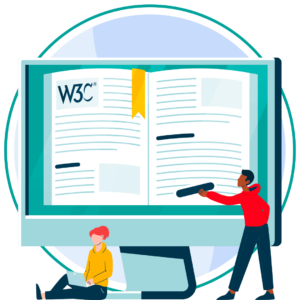
Originally added to the Rehabilitation Act in 1998 and updated in 2017, Section 508 aligns U.S. accessibility standards with international guidelines like the Web Content Accessibility Guidelines (WCAG) 2.0.
The law applies not just to websites, but to all digital content, e.g. documents, videos, software, and applications. It ensures they’re perceivable, operable, understandable, and robust for users with various disabilities.
Who must comply with Section 508 guidelines?
While Section 508 specifically targets federal agencies, it also extends to:
- Federal contractors and vendors: If you provide services or products to the federal government, your digital offerings must be compliant.
- Educational institutions: Especially those receiving federal funding or providing digital resources for public access.
- Software developers: Apps and platforms designed for government use must meet Section 508 standards.
Get a free automated accessibility check of your websites homepage. This will identify and highlight any compliance issues on your website. Followed by recommendations on how to implement the necessary changes to make your website more accessible.
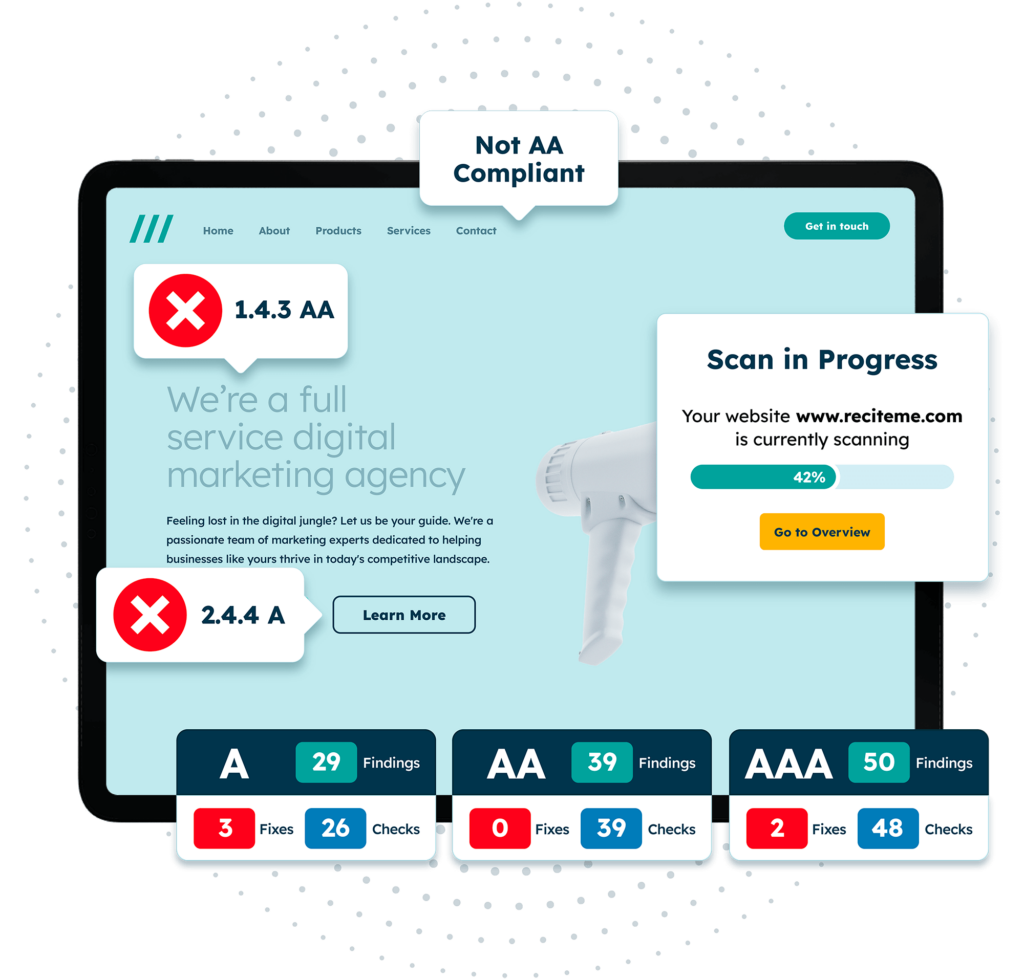
How can non-compliance lead to Section 508 lawsuits
Failing to meet accessibility standards can lead to formal complaints and even lawsuits.
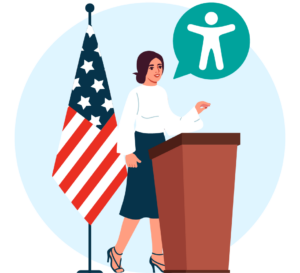
Here’s how it typically unfolds:
- Accessibility barriers identified: A user with a disability encounters a problem (e.g., cannot complete a form due to lack of screen reader support).
- Complaint filed: The issue is reported to a governing body like the Office for Civil Rights (OCR).
- Legal action initiated: If unresolved, the matter can escalate into a lawsuit, especially when digital access is critical to government services or communication.
- Investigations and penalties: OCR may conduct audits, issue penalties, or require corrective action.
Even if Section 508 doesn’t directly apply, overlapping ADA requirements make accessibility non-negotiable.
What are the consequences of dealing with a Section 508 lawsuit
Section 508 lawsuits should be avoided at all costs. They can be expensive, time-consuming, and highly damaging to your reputation. Prevention is far cheaper than litigation, both from a financial and reputational perspective.
The key consequences of Section 508 lawsuits for businesses include:
- Legal fees and settlements: Lawsuits may result in settlements ranging from thousands to millions of dollars.
- Remediation costs: Fixing a non-compliant website retroactively can be significantly more expensive than building it to be accessible from the start.
- Loss of government contracts: Non-compliance may disqualify you from current or future government work.
- Reputational damage: Accessibility lawsuits often receive public attention, potentially harming your brand and consumer trust.
- Injunctions or penalties: Courts may order strict timelines for remediation or impose penalties.
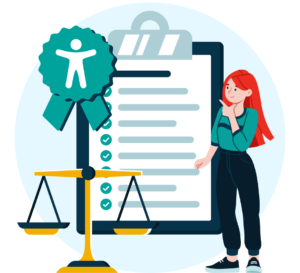
Case studies: Real Section 508 compliance lawsuits
Section 508 compliance has been the focus of multiple high-profile legal actions across government agencies, educational institutions, and technology providers. These real-world examples demonstrate the serious consequences of failing to meet digital accessibility standards and the importance of proactive compliance for any organization operating in the public sector.
Michael Leiterman v. Department of Homeland Security
Michael Leiterman, a blind attorney working for US Customs and Border Protection (CBP), a division of the Department of Homeland Security (DHS), relies on assistive technology to do his job. He filed a lawsuit claiming DHS repeatedly failed to meet Section 508 requirements, creating a discriminatory work environment.
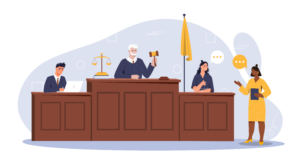
According to the lawsuit, Leiterman faced ongoing barriers due to inaccessible internal systems and communications. Routine software updates often caused his assistive technology to crash or stop working, leading to frequent disruptions. On top of that, DHS did not properly train staff to create accessible documents and emails, making it even harder for him to access the information needed for his work.
These issues had a serious impact on Leiterman’s career. He spent so much time troubleshooting and working around technical obstacles that he couldn’t focus on his legal caseload. As a result, he missed the performance benchmarks typically required for promotion, benchmarks his colleagues were able to meet. Ultimately, the court ruled in Leiterman’s favor, granting Summary Judgment and affirming that DHS had violated Section 508 by failing to provide him with equal access to the digital tools necessary to succeed in his role.
National Federation of the Blind v. Social Security Administration
The National Federation of the Blind (NFB) and Margot Downey, a blind Social Security beneficiary, filed a complaint against the Social Security Administration (SSA) for failing to make its website accessible to users of assistive technology.
Downey reported that she was unable to access key information about her benefits or complete online forms independently due to the site’s incompatibility with screen readers and other accessibility tools. Given that the SSA is a federal agency subject to Section 508, the complaint argued that the website’s inaccessibility constituted a legal violation.
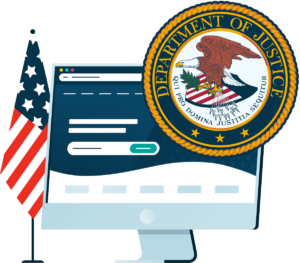
The NFB and Downey called on the SSA to remediate its digital platforms by updating its coding to meet accessibility standards, ensuring that all users regardless of ability could access services equally. This case was part of a broader push to ensure government agencies uphold their digital civil rights obligations.
National Association of the Deaf v. Harvard
In 2015, the National Association of the Deaf (NAD) filed one of the most prominent digital accessibility lawsuits in higher education. The federal class-action suit, brought against Harvard University (with a similar case filed against MIT), alleged that the university violated the Americans with Disabilities Act and Section 508 of the Rehabilitation Act by failing to provide accurate and timely captions for online content.

The core issue was access. Harvard offered a vast library of free online educational materials (lectures, podcasts, and videos) intended to expand access to learning. However, many of these resources either lacked captions or used automated captions filled with errors, making them inaccessible to people who are deaf or hard of hearing. NAD argued this denied users with disabilities equal access to educational content, in violation of federal law.
In February 2020, the lawsuit was resolved through consent decrees. Harvard agreed to caption all existing and future publicly available online content, including materials hosted on platforms like edX, YouTube, and iTunes. The university also committed to implementing accessibility policies and ongoing monitoring to maintain compliance.
Additionally, Harvard was ordered to pay $1.575 million in attorneys’ fees and legal costs, a reminder that ignoring digital accessibility comes with significant financial and reputational consequences.
How to protect your business against Section 508 legal action
Avoiding a Section 508 lawsuit isn’t just about checking a few boxes. It’s about establishing a proactive, sustainable approach to digital accessibility. As legal expectations around inclusivity continue to evolve, businesses must treat accessibility as a strategic priority. Below are four essential steps to help future-proof your organization against Section 508 compliance issues.
1. Run an accessibility audit of your website
Start with using an accessibility checker tool to quickly flag common issues like missing alt text, insufficient color contrast, or inaccessible form elements. Manual testing is also crucial, especially to evaluate features like keyboard navigation, logical focus order, screen reader compatibility, and overall usability.
Once your audit is complete, organize your findings by priority. Focus first on high-impact issues like anything that prevents users from accessing critical content or completing essential tasks should be addressed immediately.
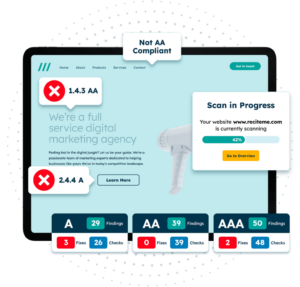
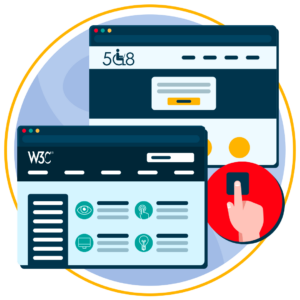
2. Implement accessibility fixes from the findings
Identifying problems is only half the battle. The next step is to act on your audit findings by addressing accessibility issues. These fixes should be made in-line with WCAG best practices and will typically require thoughtful front-end development and content practices.
3. Schedule additional audits to monitor future compliance
To maintain compliance as your site evolves, conduct regular accessibility audits, ideally quarterly and after major updates. However, large organizations that regularly update their websites may need more frequent checks.
Additionally, you can embed accessibility reviews into your QA process to catch issues early, and create a feedback channel so users can report problems. This proactive approach supports ongoing compliance and shows your commitment to accessibility.
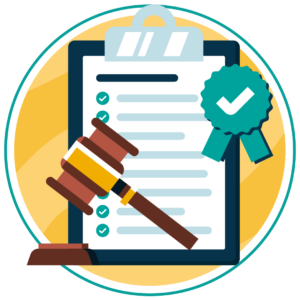
4. Train key website contributors on accessibility best practices
Accessibility starts with your team. Everyone, including developers, designers, content creators, and marketers, must understand their role in maintaining compliance. But, if key contributors don’t have the proper tools and knowledge, they can’t be expected to deliver accessible projects.
This is where website accessibility training plays a vital role in equipping your team with the skills they need. Whether it’s training developers in semantic HTML, ARIA attributes, and responsive interaction patterns or teaching content creators about appropriate headings, descriptive alt text, and descriptive links.
Our 40-page Digital Accessibility & Inclusion Toolkit helps businesses break down online barriers and make a real impact. It offers practical advice on all aspects of digital accessibility, from writing an accessibility statement to accessible website tips and inclusive hiring.

Conclusion: Ensure compliance & avoid Section 508 lawsuits
Whether you’re a federal contractor, a SaaS vendor, or simply a business looking to serve a broader audience, digital accessibility is a smart investment in your future. Taking proactive steps now, starting with a website audit, can save you from the legal and financial burden of non-compliance later. Future-proof your business by making accessibility part of your culture, not just your compliance checklist.
Section 508 website compliance lawsuits FAQs
Looking for a recap or quick summary? Here are a few of our most frequently asked questions to help you get to grips with the essentials:
Does Section 508 apply to private companies?
No, section 508 does not directly apply to private companies, unless you’re working with federal agencies. However, ADA lawsuits for digital inaccessibility are common for private entities.
Is WCAG 2.1 required under Section 508?
Currently, Section 508 aligns with WCAG 2.0 Level AA, but many organizations are adopting WCAG 2.1 voluntarily to future-proof against legal risk.
What is the difference between Section 508 and the ADA?
Section 508 applies to federal agencies and contractors. The ADA applies broadly to public accommodations, including private businesses, and is used more often in private-sector lawsuits.
How often should I audit my website?
Quarterly audits are a smart practice for federal agency websites and should also be conducted after every major update or redesign.
What are the most common accessibility issues found in audits?
Missing alt text, poor color contrast, inaccessible forms, lack of keyboard navigation, and poorly labeled buttons/links.







